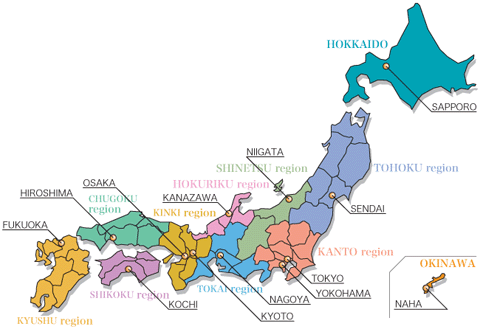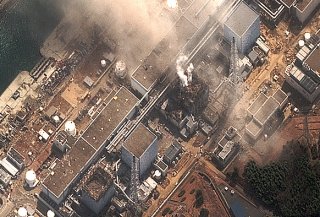curriculum EFL kids language courses Language learning online resources reviews school management self-study smart.fm technology vocabulary
by sendaiben
10 comments
The Word Engine
I think Koichi at Tofugu sums it up much better than I could, but I was very disappointed to hear the news that smart.fm closed down at the end of March (in order to renege on their pledge to remain a free site).
We’ve now moved all our students onto The Word Engine, an alternative paid site with a lot of nifty features. They have a reasonable sub-2000 yen price point for yearly subscriptions.
What sold it for me was the solid research foundation, the pre-test (V-check) that allows students to skip words they already know, and the teacher management system (V-admin) that makes it easy to keep track of large numbers of students and see how (and how much!) they are doing.
The Word Engine is an online SRS (spaced repetition system) that approaches vocabulary learning based on time boxes.
Signing up for an account is painless and takes less than a minute. Users then take a V-check test, which determines roughly how many words they already know. This is very important, as it allows students to skip items they likely know already and start right away on meaningful practice (this was a big problem with smart.fm, as it forced students to either guess at their level or start from the beginning). Payment is also easy, either online or by ordering access cards directly from Lexxica. Teachers can track their students via a free V-admin account, that shows student progress alongside the total amount of time they have spent studying online. It’s a great tool, as it allows teachers to sort by different variables.
After a few weeks, I really like the system. By far the best part is that practice is pretty much effortless. There is no penalty for getting items wrong, unlike in smart.fm, where students occasionally got really frustrated at being unable to ‘clear’ items. In the Word Engine, there is no downside for getting items wrong: they are just quietly moved back into the first box. Practice is also quick, with each session taking only a couple of minutes at the most.
While I would like to see more visuals and example sentences (things I thought smart.fm did well), these are minor issues.
So far we have over 50 elementary (higher grades), junior high, senior high, university, and adult students on the system. Feedback from the students so far is pretty good and most students are keeping to their 30 minutes a week targets (our best student has completed 22 hours of study in just over a month, and the worst just under 10 minutes, but most students are around the 2-3 hour mark).
If anyone else is using the Word Engine, I’d be really interested to hear how you are finding it.
business curriculum EFL eikaiwa ES expectations presentations school management teaching technology testing theory
by sendaiben
4 comments
Another view of the future of education?
The latter half of this video may be of interest to teachers (the first half is just generally interesting, particularly if you are a closet entrepreneur wannabe). Similar to Ken Robinson’s famous talks on the same subject.
business curriculum EFL eikaiwa expectations kids language courses Language learning school management teaching
by sendaiben
3 comments
Choice in the classroom
(I’d like to take a short break from earthquake introspection today)
Choice in the classroom
I had a great teaching experience today. It’s so simple that it’s probably not worth writing about, except that it made a big impression on me so there is a slight chance it will also prove useful to others. I was teaching one of our ‘advanced’ classes, made up of promising students that we select and recruit from our general student population (advanced classes are invitation only). This particular class has four girls in it, three junior high school second years and one third year. They’re a great bunch.
We just finished a textbook (Listening Starter 2, published by Compass), and had to decide what to use next. I had something I want to use, but without really having planned to, I pulled out three possible options and introduced each one, then asked the students what they thought. We ended up having a short, to the point, focused discussion about which textbook they wanted to do next, and why.
It wasn’t the one I had chosen.
This is fairly basic stuff. Give the students choice, make them responsible for their learning, give them more autonomy, etc. The thing is, I clearly wasn’t doing it as much as I could have. My students today showed me that they are mature and responsible enough to make these kinds of choices for themselves, and by allowing them to make that choice I maybe managed to convey to them how much I respect and like them. I think I ended up learning the bigger lesson.
It was a great end to a very long day of teaching.
earthquake life in Japan living in Japan personal refugee
by sendaiben
5 comments
The Great East Japan Disaster Part Three: Refugee 1.0
The third installment. See Part One and Part Two if you are confused.
The Great East Japan Disaster Part Three: Refugee 1.0
The actual drive from Sendai to Kanazawa was nightmarish, not because it was particularly bad, but rather because it seemed vividly unreal.
We left the house about 2:30am, and headed south on Route 4 as the expressways were all closed due to the earthquake. We had half a tank of fuel, something that will become significant shortly. The power was off everywhere, so we had to slow down at each intersection to check for cars. No lights in houses, no street lights, no traffic lights. It was strangely peaceful and slightly eerie, with no other cars to be seen. The roads in the southern part of Sendai were not damaged, unlike the east of the city where our classroom is, where they buckled and cracked dramatically.
After an hour or so I couldn’t keep my eyes open, so I got my wife to take over driving duties and napped in the passenger seat. We were just north of Fukushima city at that point.
Of course, we had originally planned to go west then down the Sea of Japan coast. Unfortunately the fact that we only had half a tank of petrol made it seem more sensible to use the main roads to the south, even if that did take us closer to the reactor than we were comfortable with. Remember, at this point all we knew is that the plant was at risk, so we were very nervous about worst case scenarios (in hindsight, with some justification!).
After a couple of hours of sleep, I woke up and resumed driving. We passed through town after town, all silent and dark, and it wasn’t until we reached the southern end of Fukushima that the electricity came back on. Even then, shops and more importantly, petrol stations were closed and boarded up.
Further and further south we drove, with the fuel gauge dropping lower and lower. It was just outside Utsunomiya that I started getting seriously worried. The needle hit the bottom of the red section, and I figured we probably had about ten kilometres left before we had to ditch the car.
Suddenly we passed a petrol station with a small line of about five cars. It didn’t register for a few seconds, but then I pulled a very sharp u-turn and five minutes later we were in front of a pump. They were out of ordinary petrol, but still had four-star (premium, high-octane). I gratefully filled the tank, and we were on our way.
As we drove on, I realised how lucky we had been to drive past a petrol station that had just opened. Every other one we say for the next hour or two had a line of twenty to thirty cars waiting, or was closed.
The rest of the day was fairly ordinary. We had lunch at a Sukiya (a chain restaurant), stopped at a couple of convenience stores, drove through the most amazing scenery I have seen in Japan (Nagano and Toyama), and finally got to Kanazawa around 6pm, roughly fifteen hours after we set off.
That night we went to a sento (public bathhouse) and out to dinner. It was wonderful.
The Great East Japan Disaster Part Two: Nuclear Accident
Continuing my account of the March 2011 disaster. See Part One for the beginning of the tale.
Part Two: Nuclear Accident
Around 6pm on Saturday evening (the day after the earthquake), just after we had eaten and just as we were thinking about going to bed (with no power and no heat, you quickly revert to a more natural sleep cycle!), our phone rang. Now, given that we had no power and the phones were supposed to be out, this was fairly surprising.
We actually got phone calls from two people that evening: my uncle in the UK, and my godfather in Germany. Both were calling because of initial reports of the nuclear power plant accident in Fukushima.
There wasn’t much information at that point, just reports that the cooling systems were broken and the reactors might be breached. I talked to both of them briefly, then hung up and went to talk to my family. Before convincing them though, I had to convince myself. Remember, I had spent seven hours driving a 30km round trip the day before. I knew how the roads would end up if everyone in Sendai decided to evacuate. We wouldn’t get ten miles…
That’s what decided it for me. Go now, or risk never being able to go. We had to leave immediately.
The other factor was to run through the possible outcomes of the decision. I first remember seeing this in a video about climate change, of all things. You can check it out here.
I did the same thing with our possible escape. Run away/stay put. Nuclear accident is harmless/catastrophic. Made a funky box decision matrix thing, and compared the worst case scenarios: we ran away and the nuclear accident was harmless. We feel a bit silly, it costs us some money. We didn’t run away, and the nuclear accident was catastrophic. Hollywood disaster movie ensues, with us as extras (ie not the people that get picked up in the presidential helicopter just in time).
Once I got that clear in my head, I quickly persuaded my wife and kids. We decided to leave immediately, except that my wife didn’t want to leave her parents behind, so we sent one of the girls to get them. Another of them had gone to take some food to her colleagues just before we got the phone calls, so we had to wait for her too.
It was a tense wait, sitting around the kerosene stove. We put the candles out to save them and grabbed a change of clothes and some personal items. I couldn’t find my youngest daughter’s passport, and the eldest’s one had expired. Figured we could sort something out later.
Coincidentally, my wife’s cousin who lives in Kanazawa on the other side of Japan called her just after the earthquake and before the phones went down, offering her a place for us to stay. We decided to head that way as I had a vague notion to head for Osaka and ultimately abroad to Thailand or the UK if things went really bad, and Kanazawa is on the way to Osaka (and more than 600km from the nuclear reactor across a major mountain range). It seemed to be a good choice.
A good two hours later, my parents in law showed up. Apparently it wasn’t traffic, but rather the fact that it took that long to persuade them to come with us that had caused the delay. They didn’t really see the problem, didn’t want to go (especially in the middle of the night), and were not convinced there was a problem. After all, the government was saying it was okay…
After pacifying them, we sent them off first with two of the girls at about 22:30, telling them to drive across to the Sea of Japan, then down the coast to Kanazawa. The one huge problem was fuel, as shortages, damaged petrol stations, power cuts, and panic buying had rendered it almost impossible to find in Sendai. I figured we’d find some once we got out of the earthquake zone.
So we waited for our eldest to come back. And waited. And waited some more. At around 0:30 my wife went to bed while I stayed up. It was 2am when our daughter came back, so I quickly told her what was going on, gave her ten minutes to pack, and got my wife up.
Jumping into the car, we looked at the half-full petrol tank and thought about distances and routes.
Before we left, we set out as much water and food for our cats as we could, then said goodbye to them.


